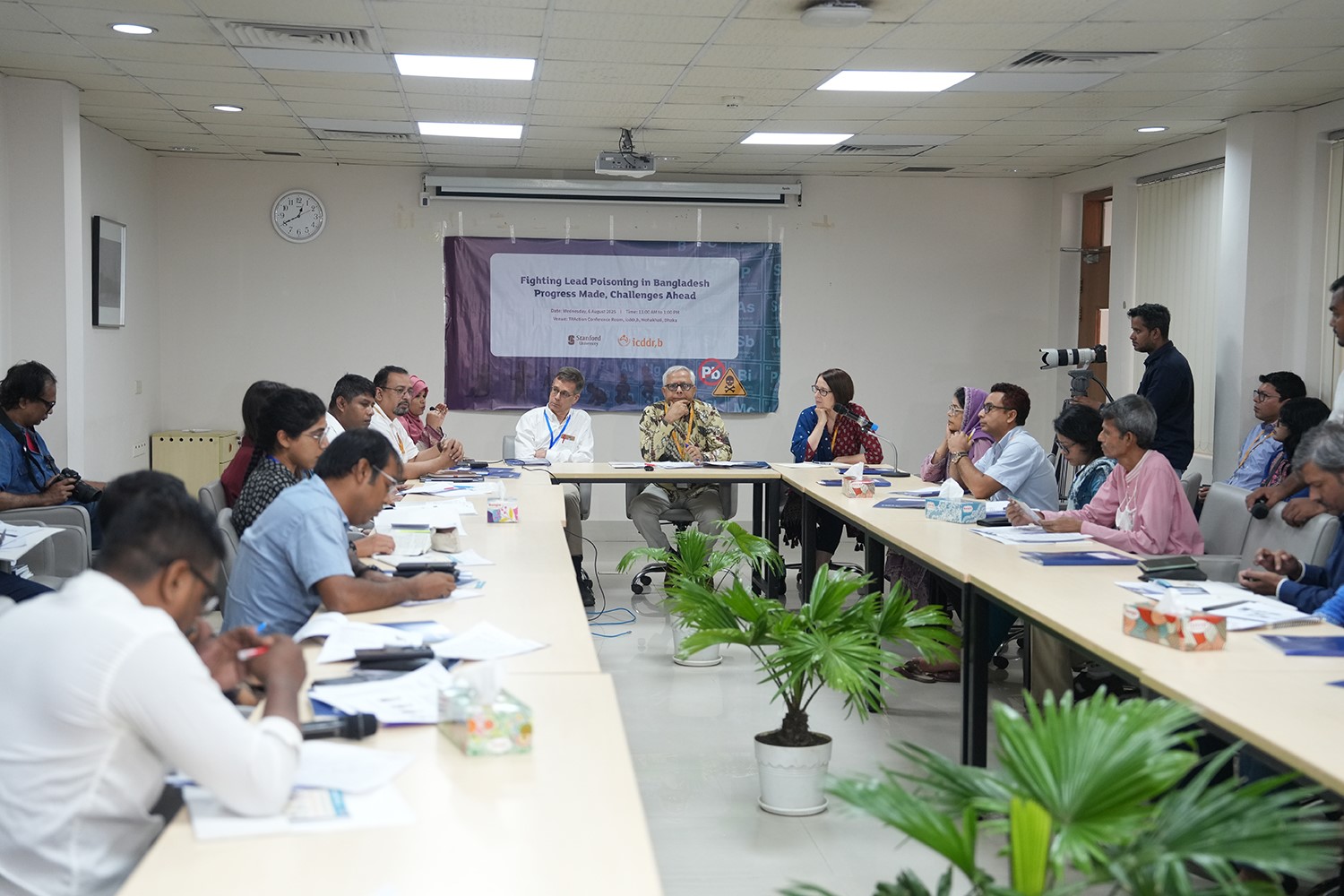International Centre for Diarrhoeal Disease Research, Bangladesh (icddr,b) has issued an urgent call for national action to address widespread lead poisoning, following new research revealing dangerously high blood lead levels among children in urban areas.
At a discussion titled “Fighting Lead Poisoning in Bangladesh – Progress Made, Challenges Ahead,” held on Thursday in Dhaka, icddr,b experts, along with international researchers, warned that lead exposure remains a severe and largely unaddressed public health crisis—particularly for children living near informal industries and slum settlements.
“There is no safe level of lead exposure, and yet millions of Bangladeshi children are being poisoned every day,” said Dr Sarah Salway, Senior Director of icddr,b’s Health Systems and Population Studies Division. She emphasized that lead contamination continues to be a “silent threat” to child health and development.
Bangladesh ranks as the fourth most lead-impacted country globally, with an estimated 36 million children suffering from elevated blood lead levels, according to UNICEF. Past research presented at the event showed that from 2009 to 2012, 87% of children under two in Dhaka slums had blood lead levels exceeding 50 µg/L—far above the U.S. Centers for Disease Control and Prevention (CDC) reference level of 35 µg/L.
Professor Steve Luby of Stanford University, a former director at icddr,b, explained how lead impairs brain development, causes IQ loss, and leads to lifelong cognitive deficits. “Lead enters the body through multiple pathways—air, soil, food, and even the placenta during pregnancy—making it impossible to avoid unless we eliminate environmental sources,” he said.
Dr Md. Mahbubur Rahman, Project Coordinator at icddr,b, presented a decade of findings pointing to major sources of lead exposure, including unregulated battery recycling, metal smelting, lead-based paints, cookware, cosmetics, and industrial pollution.
One success story involved turmeric adulteration, where the spice was polished with lead chromate to enhance color. Following joint research by icddr,b and Stanford, national authorities launched public awareness campaigns and regulatory enforcement. As a result, lead-contaminated turmeric dropped from 47% of samples in 2019 to virtually zero in 2021.
However, new data presented by Dr Jesmin Sultana from a 2022–2024 study paints a bleak picture: among 500 children aged 2–4 in Dhaka, every child had detectable levels of lead in their blood, with a median level of 67 µg/L. Nearly 98% exceeded the CDC’s reference level. Children living within 1 km of industrial sites had 43% higher lead levels than those more than 5 km away.
The findings underscore the urgent need for government intervention to regulate and remediate hazardous industrial sites.
“Lead poisoning silently steals our children’s future,” said Dr Tahmeed Ahmed, Executive Director of icddr,b, in his closing remarks. “It undermines brain development, damages health, and limits our national potential. We must act now—decisively and collectively.”
The event was attended by journalists, policymakers, and researchers from icddr,b and Stanford University, with participants reaffirming their commitment to scaling up action against lead exposure across Bangladesh.


